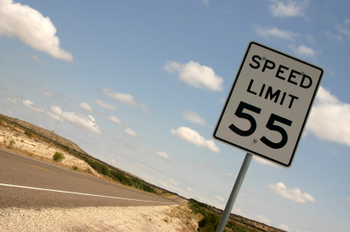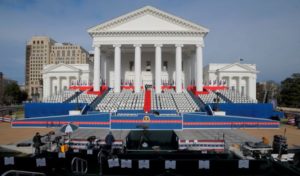
Study finds lower speed limits reduce fatal accidents and pollution levels.
In recent years, a number of states have raised speed limits on highways. Observers suggest that other states will likely follow suit, as toll roads with high speed limits create revenue for states as federal highway diminishes.
In a recent paper, however, Professor Arthur van Benthem at the University of Pennsylvania’s Wharton School suggests that raising or eliminating speed limits will negatively impact society in a number of important ways. In his paper, “Do We Need Speed Limits,” van Benthem investigates whether increases in speed limits have affected the number of traffic accidents and fatalities, pollution levels, and the effect of these changes in pollution on infant mortality.
Van Benthem uses a natural experiment to test the consequences of these speed limit increases: the 1987 amendment to – and 1995 repeal of – the National Maximum Speed Law. Between 1974 and 1987, the Law mandated a 55 miles per hour speed limit across the country. In 1987, an amendment allowed states to increase the speed limit to 65 miles per hour on rural interstates, and in 1996, states were allowed to set their preferred speed limits on all roads. Comparing these three periods using data from Oregon, California, and Washington, van Benthem – employing sophisticated econometric techniques – finds that raising the speed limit by 10 miles per hour resulted in a 3-4 miles per hour increase in traffic speed.
According to this analysis, this increased traffic speed raised the number of fatal and non-fatal accidents; an increase in the speed limit of 10 miles per hour resulted in 14% more accidents. The severity of these accidents also increased; with a higher speed limit, if an accident occurred, that accident was 6-9% more likely to be fatal.
The increased speed limit also negatively affected the environment. Prior research concluded that – as cars burn more fuel at higher speeds – carbon monoxide and nitrogen oxide emissions increase rapidly and disproportionately. Measuring carbon monoxide and nitrogen oxide output at a number of recording stations along highways in the three states, van Benthem finds that increasing the speed limit to 65 miles per hour resulted in a 23% increase in carbon monoxide levels and a 16% increase in nitrogen oxide levels.
The relationship between increasing the speed limit and negative health effects – resulting from air pollution – on infant health is less robust. While van Benthem’s research suggests that the increase in air pollution resulted in 17-45 additional fetal deaths, these results seem highly contingent on van Benthem’s model specification. In addition, increasing the speed limit did not seem to negatively impact a number of other commonly used indicators of infant health, such as premature birth and infant death.
Van Benthem moves beyond measuring the effects of increasing the speed limit to compare the private benefits of driving more quickly and the societal costs of higher pollution and more accidents. Using commonly-accepted measures of the value of human life and the value of travel time, van Benthem calculates and compares the net cost to society of raising the speed limit, suggesting that the societal costs outweigh the private benefits by over six times.
Do van Benthem’s results suggest that recent attempts to raise speed limits are bad public policy? Not necessarily. Increasing speed limits creates private benefits and negative externalities. While van Benthem’s findings rely on data from the 1980s and 1990s, systematic reasons suggest such externalities may no longer be as costly. For example, improvements in car safety and fuel consumption have likely reduced the frequency and severity of accidents, as well as pollution production. As a result, the private benefits of increased speeds may now outweigh these reduced externalities. Future research—using contemporary data or extrapolating from van Benthem’s empirical work—would be helpful in determining whether states should be reluctant to raise speed limits.



